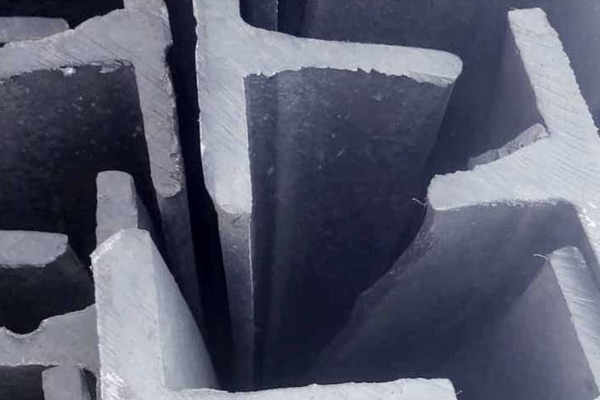
Shield
What is a shield and its types
Shield or T-profile is one of the most widely used sections in construction and in industry in general. Many people may confuse the shield with a corner, but the two sections are different. In this article, we are going to give a complete review of the passage and also learn more about its applications and types. So stay tuned.
The shield is made of long, slender wings and is also known as the T-profile because of its T-shaped appearance. This industrial and construction product is produced in two forms of fabric and press; In some cases, the beam is even cut lengthwise from the middle to produce a shield.
What is a shield?
The shield is made of long, slender wings and is also known as the T-profile because of its T-shaped appearance. This industrial and construction product is produced in two forms of fabric and press; In some cases, the beam is even cut lengthwise from the middle, thus producing this section. If they are to be used in strong joints and joints that require high thickness, heavy beams and hashes are cut to provide the required strength and thickness for the desired shield.
It should be noted that sprays with a thickness of 2 mm are more used, but in the market from a thickness of 0.9 to 2.5 mm is available. In addition to the difference in thickness, their prices are also different, so you can refer to the price of the shield and find out the price of different types. The walls of the spheres are usually the same size as their edge, so the various scores for them are taken from the size of the edge or wall in millimeters. For example, if 20 mm is the size of its edge, it becomes a score of 2, and it is called a score of 2. In addition to these dimensions, the length of the spar is often between 6 and 12 meters. And according to international standards, they should be produced in the form of rounded edges and sharp edges. In the following, we will explain more about the types of shields.
Types of shields
Sprays are made of iron, copper, aluminum, brass and steel and, as mentioned above, are divided and produced in two ways in appearance.
In the production method, hot rolling and cold rolling are divided into two categories. In the hot rolling method, advanced and evolved machines are used, and if we measure the weight, hot rolling is at the top of the table among the production processes. This method is more common than the cold rolling method and in the production of quality parts, the shield price in this method is lower than the cold rolling method and due to this economic efficiency, they are produced more by the hot rolling method. Hot-rolled products are in the shape and size of conventional sprayer standards.
Some of these standards are: DIN EN 10055, DIN59051 and DIN1022
Aluminum shield
Aluminum sprays are mostly used in surface cases, false ceilings, bathrooms and kitchens, and due to their good strength and easy cleaning, they are widely used in the design of shops and modern architecture in general.
Iron shield
There are two types of iron shields available in the market:
Iron Fabric
Fabric iron shield profile is a T-shaped profile that becomes a shield after rolling. The dimensions of this profile are the width and thickness of the wings and the life of the product, according to the German standard or the same Stahl table. Of course, there are different types of profiles that you can get acquainted with by referring to the types of profiles section.
Iron climbing
Climbing iron shield profile is a geometric profile and differs from fabric iron shields in weight and therefore has less strength and is used in cases where dimensions are more priority and importance.
But the classification of iron shields does not end here and in terms of cross-sectional appearance, they are divided into three different categories:
Spray with equal sides whose width and height are equal.
Spray with unequal sides in which the height is half the width.
High height spray
Spray application
Shield is one of those steel sections that has received a lot of attention today and is widely used in the construction industry and in industry in general. If we look more closely, we can find many examples of their use around us. However, here are some examples of using a shield to make it more tangible to you:
To connect the stairs to the columns
Columns and trusses (rigid structures of triangular units)
To build all kinds of doors and windows
For strength in the structure of greenhouses
In glass roofs and construction of metal structures
As a piece on false ceilings
Dry or dry porcelain
As an inhibitor in buildings
Dam industry
In guardrails (along the highway, next to the bridge, etc.)
Translucent ceilings
Establishment of metal infrastructure
Building Wall Coiling (Wall Post)
Summary
In this article, we tried to make you more familiar with the spray and get to know its different types better. We also talked about the weight table and standards related to this section. In Iran, its production takes place in various factories and is one of the sections that has been considered in recent years for the greater strength of buildings. We hope this article has made you more familiar with this piece. Be sure to share your comments and questions with us.


